Bond Yields, Interest Rates, and your Investment Portfolio

Yield, and its many iterations, is the multi-billion-dollar question for all of high finance:
How much money will I make per dollar invested?
To the uninitiated, yield calculations appear to be a simple matter of long division. In reality, however, this loaded question might account for regular investment income, capital gains, prevailing interest rates, and discounted cash flows.
The $135 trillion-dollar global bond market is significantly larger than the much-ballyhooed stock market. Meaningful yield calculations vary according to bond type and are critical to make relevant comparisons across asset classes.
Credit Securities, Interest Rates, and Bond Prices
Bonds are credit securities, where investors lend money to corporations and government institutions. As a bondholder, you collect interest payments until the loan is repaid, at maturity.
Creditor asset claims are senior to those of shareholders. Financial managers declare and pay cash dividends out of after-tax profits at their discretion, while we account for bond interest as a pre-tax expense on the income statement.
Corporations that fail to honor bond principal and interest payments are in default. From here, bondholders are to be paid first out of any asset liquidation proceeds. In bankruptcy, shareholders are last in line, and relegated to take whatever scraps are left for pennies on the dollar, if that.
Pension funds, insurers, and retirees clamor for bonds, for their supposed safety, relative to stocks. Conservative savers, by definition, are more so concerned with preserving purchasing power, rather than investing for volatile growth.
Par value for bonds is $1,000. Bonds, of course, are subject to interest rate risk. Existing bonds lose value through a sharp rise in interest rates. New bonds then offer higher payouts and bonds already in circulation must sell at a discount to par to attract any investor interest.
Alternatively, plunging interest rates will drive prices higher, and have many old bonds trading at a premium to par.
Coupon Rate and Current Yield
In terms of bonds, coupons are synonymous with interest, and the term dates back to when bondholders presented paper coupons at banks to collect interest. Yes, the original coupon clipper was a wealthy individual, who lived off bond interest alone.
Coupon rate is a simple calculation that describes expected interest on a bond first issued at face value, or par. A $1,000 bond paying out $70 annual interest would show a 7% coupon rate.
Bonds, however, rarely trade at par value. Current yield considers market prices and projects annual investment income generated by an initial cash outlay. Be further advised that investment income through current yield accounts for interest and dividends alone, and not any possible capital gains.
If rates were to rise sharply, our same $1,000 face value bond may fall to $900 in price, while still paying out $70 interest. For a new buyer, the current yield on this bond would now be $70 / $900 or 7.8%.
A slightly high current yield relative to the coupon rate is a typical marker of a discount bond. Similar to stock market dividends, an obscenely high current yield may signal that financial conditions are quickly deteriorating. Investors will immediately dump assets, when a distressed bond issuer loses a once formidable credit rating and plunges deep into junk status, enroute to bankruptcy.
Yield to Maturity
Current yield, again, is only applicable to investors holding bonds through the course of one year. As the name implies, yield to maturity projects total returns on bonds held to maturity, which would also include any capital gains and losses.
Coupon rate, current yield, and yield to maturity will all be equal, if you buy a bond at par and hold the security until maturity. Life, especially as it relates to financial markets, is rarely ever so simple. Man Plans. God Laughs.
Yield to maturity (YTM) is a complex series of calculations that discounts future cash flows. For bonds, yield to maturity is synonymous with internal rate of return, or the discount rate that has the current price being equal to the present value of all interest income, plus the loan principal at the maturity date.
We assume that regular interest payments will all be reinvested at the same, yield to maturity rate. For this impossibility, YTM is imperfect and can only ever be estimated.
Yield to maturity components include bond annual coupon payment, face value, present value market price, maturity date, and number of compounding periods. A ten-year bond paying 7% interest will pay $35 semiannually over 20 periods.
With these inputs, investors may use bond tables, financial calculators, and the Microsoft Excel RATE function to arrive at yield to maturity. When using Excel, be careful to multiply the RATE output times two – to annualize YTM.
As an annualized return, we use yield to maturity to make comparisons between bonds with different maturity dates.
Tax-Equivalent Yield
Tax-equivalent yield is somewhat self-explanatory, as it projects the minimal acceptable rate for taxable bonds to match the real returns of Treasuries and municipal bonds that do benefit from favorable tax treatment.
Municipal bond interest is free from all income taxes at the Federal level and in most states, while U.S. Treasuries are exempt from state and local taxes.
For 2023, taxable income will be levied at 10%, 12%, 22%, 24%, 32%, 35%, and 37%, with single filers earning $578,126 ($693,751 married filing jointly) or more in income occupying the highest bracket. Additionally, California is home to the highest marginal state income tax rate in the nation, at 13.3%.
To state the obvious, high earners in high-tax West Coast and I-95 megalopolis cities and states will benefit most from tax-free bonds. Middle income savers may still be served best with corporate bonds, which will offer higher interest payouts.
For tax-equivalent yield, we divide municipal bond yield by one minus marginal tax rate. The tax-equivalent yield on a 7% municipal bond would be 11.1% (0.07/0.63), for wealthy Texans and Floridians paying no state income taxes. In this case, taxable corporate bonds must offer at least 11.1% in yield to match local bond offerings.
Financial Strategy
We must not suffer from paralysis by analysis. Interest rates are all but impossible to predict, as the money supply, government spending, foreign exchange, inflation, and gross domestic product are all weighted factors upon the cost of money.
To manage financial risks, investors may build out effective bond portfolios according to asset class, geography, industry, and duration to maturity. The money market represents short-term securities, which may be quickly rolled over into new debt offering higher payouts through inflationary times. Alternatively, a long-dated bond will command top dollar if rates were to decline amid recession.
Onyx Investments will implement financial planning software and basic algebra to run through various economic scenarios before recommending bonds. A properly diversified portfolio will also include carefully selected stock market investments to accommodate growth.

